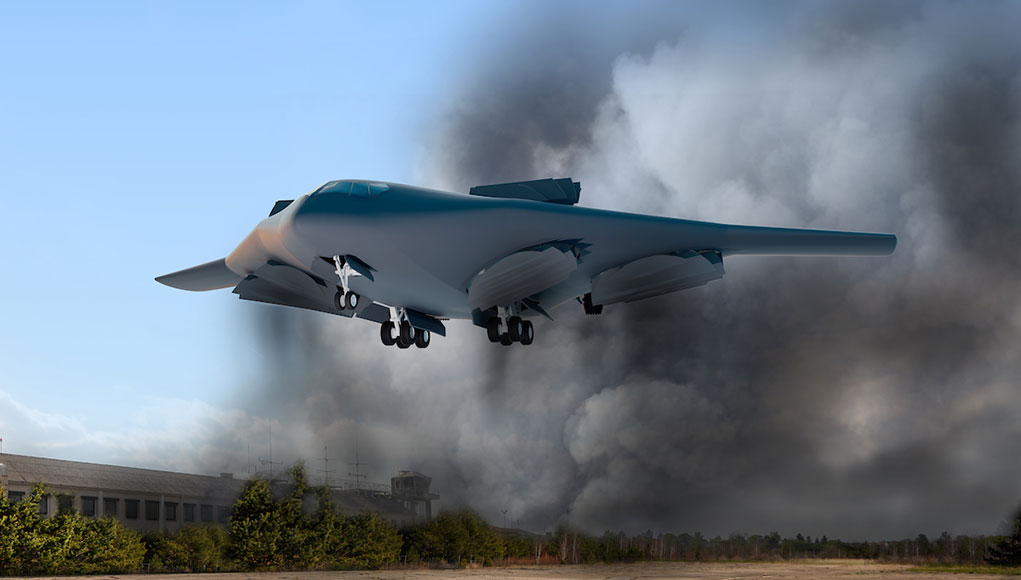The French Ministry of Armed Forces has officially launched the Unmanned Combat Aerial Vehicle (UCAV) program as part of the Rafale F5 standard development. This event marks the beginning of a new era in aerial combat capabilities for the French Air and Space Force and Navy.
The UCAV program aims to develop a combat drone that will operate alongside the Rafale fighter jet, enhancing its capabilities and expanding its operational range. This UAV will complement the Rafale and be suited to collaborative combat. It will incorporate stealth technologies, autonomous control (with man-in-the-loop), internal payload capacity, and more. It will be highly versatile and designed to evolve in line with future threats.
As part of the Rafale F5 program, the UCAV will fully integrate into the fighter jet’s systems, allowing seamless coordination and data sharing. This integration will enable the Rafale to extend its sensor reach, engage targets at greater distances, and perform high-risk missions without putting pilots in harm’s way. The program is set to leverage advanced technologies in artificial intelligence, secure communications, and autonomous systems to ensure the UCAV’s effectiveness in complex operational environments.
The UCAV will benefit from the achievements of the nEUROn program, Europe’s first stealth UCAV demonstrator. Initiated in 2003, the nEUROn program brought together the aeronautics resources of six European countries, with project management by Dassault Aviation. nEUROn completed its maiden flight in December 2012. More than 170 test flights have been conducted to date. The nEUROn program has lived up to all its promises regarding performance levels, lead times, and budget.

Saab and KAI Partner to Offer GlobalEye AEW&C System to South Korea
Saab and Korea Aerospace Industries (KAI) have signed a Memorandum of Understanding (MoU) to collaborate on offering the GlobalEye Airborne Early Warning and Control (AEW&C) system to the Republic of Korea Air Force (ROKAF). This partnership aims to meet South Korea’s specific requirements for a new AEW&C aircraft, potentially replacing or supplementing their existing Boeing E-7 Peace Eye fleet.
The GlobalEye system, based on Bombardier’s Global 6000 aircraft, offers multi-domain capabilities, including air, maritime, and ground surveillance. It features Saab’s Erieye Extended Range radar and a comprehensive suite of command and control systems.

Aurora Flight Sciences Unveils Revolutionary Fan-in-Wing Aircraft Concept for DARPA’s SPRINT Program
Aurora Flight Sciences, a Boeing company, has revealed a groundbreaking vertical lift aircraft concept utilizing fan-in-wing (FIW) technology for the Defense Advanced Research Projects Agency’s (DARPA) Speed and Runway Independent Technologies (SPRINT) program. The innovative design aims to provide high-speed, runway-independent mobility for contested environments, combining vertical lift agility with fixed-wing aircraft’s payload capacity and aerodynamic efficiency.
The currently designed uncrewed demonstrator has a 14-meter (45-ft) wingspan and a 454 kg (1,000-pound) payload capacity. Powered by off-the-shelf turbofan and turboshaft engines, the aircraft is expected to reach a maximum speed of 450 knots (833 km/h) true airspeed (KTAS). The FIW propulsion system integrates embedded lift fans with a blended wing body design, enabling vertical take-off and landing capabilities without sacrificing performance.
Aurora and Boeing are collaborating on key technologies for this revolutionary solution, which has the potential to be scaled up for medium and heavy-lift applications. The team envisions a future manned aircraft with a 40-meter (130-ft) wingspan, four lift fans, and a 12-meter (40-ft) payload bay, capable of meeting or exceeding the performance of typical fixed-wing military transport aircraft while offering the tactical advantage of vertical takeoff and landing.
The SPRINT program is progressing through various testing phases, with the team having completed the first of three major test events earlier this year. A ground effect test using a 1.4 meter (4.6-ft) wingspan model with three lift fans demonstrated negligible suck-down effects during hover. Upcoming wind tunnel tests in late 2024 and early 2025 will further evaluate stability, control, and aerodynamic effects. The program’s current phase is set to continue through May 2025, with flight testing planned for 2027.
RTX’s Raytheon Secures $736 Million Contract for AIM-9X Missile Production
Raytheon, a business unit of RTX, has been awarded a $736 million contract by the U.S. Navy to produce AIM-9X SIDEWINDER missiles. The contract specifically covers the production of the improved Block II variant, which incorporates upgrades to address hardware obsolescence and ensure superior performance and long-term reliability. Barbara Borgonovi, president of Naval Power at Raytheon, emphasized the strong worldwide demand for the AIM-9X and stated that the company is investing, innovating, and partnering with the U.S. Navy to increase production capacity starting with orders next year significantly. The contract work will be carried out at various locations within the continental United States through 2029.
More news this week:




















